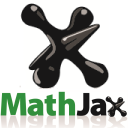
J'ai créé ce séminaire en pensant aux mathématicien·ne·s, et notamment aux plus jeunes. J'y demande à des collègues de présenter le contexte mathématique de certains exposés du Séminaire de mon aïeul, N. Bourbaki, pour les rendre plus accessibles ; ils pourront aussi en introduire quelques outils ou des motivations plus lointaines. — Betty B., Nancago, Janvier 2018.
Le Séminaire Betty B. a lieu à l'Institut Henri Poincaré (IHP, amphithéâtre Darboux), 11 rue Pierre et Marie Curie, Paris 5e. — [iCal] [Affiche] [Résumés]
Studying first-order theories via combinatorial properties of formulae lies at the heart of pure model theory. The question whether these so-called dividing lines correspond to purely algebraic notions when applied to fields has been a driving force in the model theory of fields for the past 40 years. In this talk, we introduce the relevant model-theoretic combinatorial definitions (including NIP and dp-rank) as well as discuss their field-theoretic consequences. In particular, we give an overview of the area and its main conjectures.
On fera une introduction élémentaire à la théorie de l’information telle qu’elle est utilisée dans la théorie de l’entropie des systèmes dynamiques. L’entropie apparaît souvent comme un taux de croissance sous la dynamique de mesures conditionnelles sur les feuilles d’un feuilletage invariant. En dynamique homogène, il arrive souvent que les feuilletages invariants soient donnés par les orbites d’un groupe localement compact. On verra en quoi la distinction entropie positive/entropie nulle est particulièrement bien adaptée à ce cadre. La conjecture de Furstenberg et le théorème de Rudolph sur \(\times 2\), \(\times 3\) en est l’exemple le plus parlant.
Les graphes expanseurs sont des graphes finis qui combinent deux propriétés d’apparence contradictoire : ils ont relativement peu d’arêtes mais sont extrêmement bien connectés. Leur existence est loin d’être évidente, et leurs applications sont extraordinairement variées (que ce soit en combinatoire, géométrie, algèbre, arithmétique, ou autre). L’exposé présentera certains de ces aspects.
Le Séminaire N. Bourbaki a lieu à l'Institut Henri Poincaré (IHP, amphithéâtre Hermite), 11 rue Pierre et Marie Curie, Paris 5e. — [iCal] [Affiche] [Résumés]
Suite à un problème technique, les exposés ne seront
The "Shelah Conjecture" proposes a description of fields whose first-order theories are without the Independence Property (IP): they are finite, separably closed, real closed, or admit a non-trivial henselian valuation. One of the most prominent dividing lines in the contemporary model-theoretic universe, IP holds in a theory if there is a formula that can define arbitrary subsets of arbitrarily large finite sets. In 2020, Johnson gave a proof of the conjecture in an important case; namely, the case of dp-finite (roughly: finite dimensional) theories of fields. Combined with a result of Halevi–Hasson–Jahnke, Johnson’s Theorem completely classifies the dp-finite theories of fields.
We will explain this classification, describe some ingredients of the proof, and explore how Johnson’s Theorem and the Shelah Conjecture fit into the bigger picture.
This talk surveys the classification of joinings of higher-rank torus actions on \(S\)-arithmetic quotients of semisimple or perfect algebraic groups and some of its applications. This classification was proved by Einsiedler and Lindenstrauss (Duke Mathematical Journal 2007, Publications mathématiques de l’IHÉS, 2019). It establishes that ergodic joinings must be algebraic, and in particular that such torus actions in many cases must be disjoint, that is, they admit only the trivial joining which is the product of the Haar measures on each of the factors.
Their proof is based on entropy methods, developed by Einsiedler, Katok, Lindenstrauss and Spatzier. We will describe these methods and give some ideas on how they fit into the scheme of their proof. Specifically, we will explain how to prove disjointness when the associated algebraic groups have a different root structure. This already allows for some applications, which will be presented at the end of the talk.
Expander graphs (sparse but highly connected graphs) have, since their inception, been the source of deep links between Mathematics and Computer Science as well as applications to other areas. In recent years, a fascinating theory of high-dimensional expanders has begun to emerge, which is still in a formative stage but has nonetheless already lead to a number of striking results. Unlike for graphs, in higher dimensions there is a rich array of non-equivalent notions of expansion (coboundary expansion, cosystolic expansion, topological expansion, spectral expansion, etc.), with differents strengths and applications. In this talk, we will survey this landscape of high-dimensional expansion, with a focus on two main results. First, we will present Gromov’s Topological Overlap Theorem, which asserts that coboundary expansion (a quantitative version of vanishing mod \(2\) cohomology) implies topological expansion (roughly, the property that for every map from a simplicial complex to a manifold of the same dimension, the images of a positive fraction of the simplices have a point in common). Second, we will outline a construction of bounded degree \(2\)-dimensional topological expanders, due to Kaufman, Kazhdan, and Lubotzky.
Pour recevoir à l'avance le programme et les résumés de chaque séminaire, veuillez vous abonner en
envoyant un mail à
Pour recevoir les annonces des prochains séminaires : écrire un message à
cette adresse.
Vous pouvez aussi ajouter à vos calendriers électroniques les agendas hébergés sur le portail Indico : Séminaire Betty B. et Séminaire Bourbaki (format iCalendar)
Une subvention du CNRS couvre une partie des frais d'organisation de ce Séminaire.